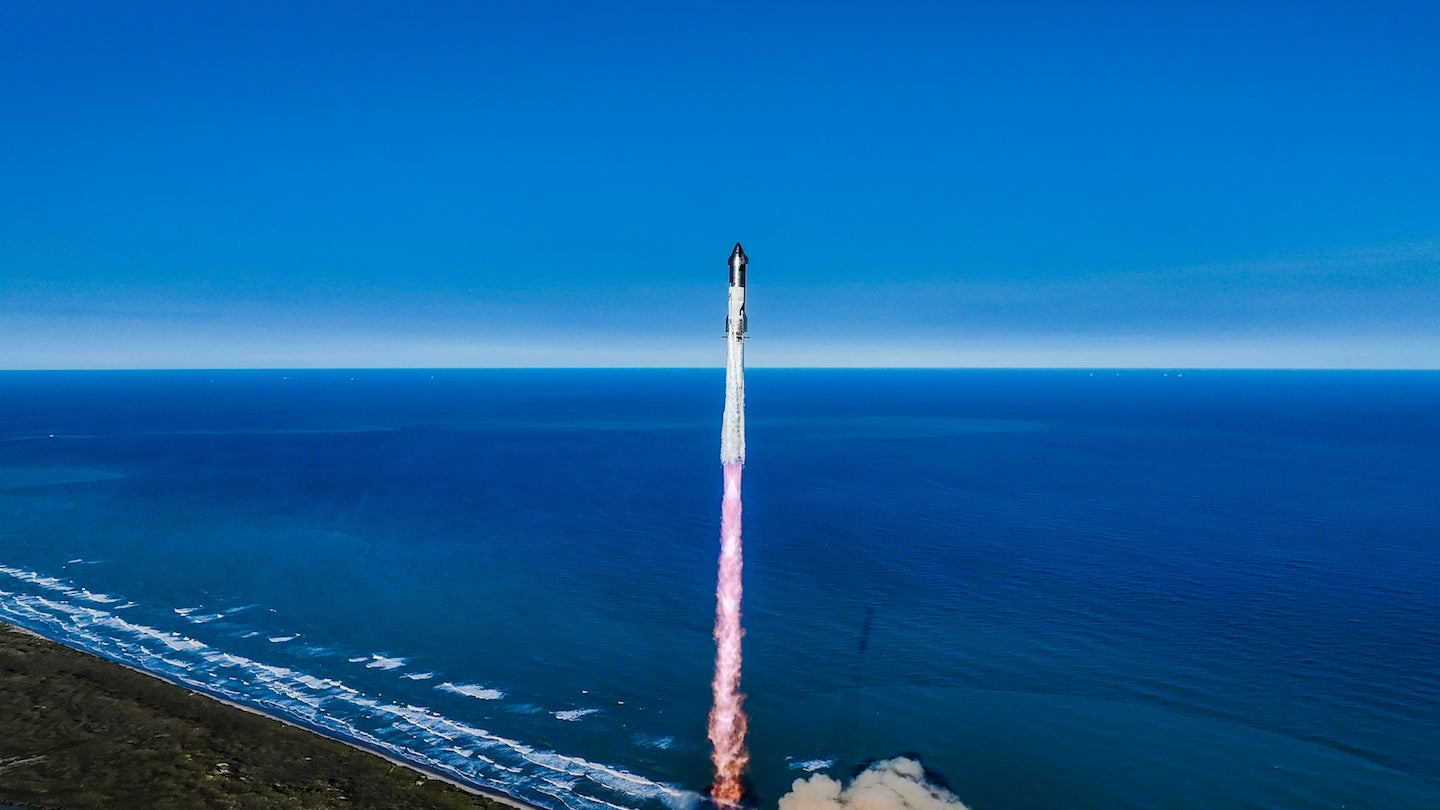Latest News

SpaceX launched the sixth Starship flight test on Nov. 19. Photo: SpaceX
The Federal Aviation Administration (FAA) is on the path to modify SpaceX’s license to authorize more Starship launches from SpaceX’s launch base in Texas.
The FAA released a revised draft of its environmental assessment for Starship launches on Wednesday, just after SpaceX completed a Starship test flight on Nov. 19.
The agency said its federal action is to modify SpaceX’s existing license to authorize increased cadence from the Boca Chica, Texas, launch site to up to 25 annual launches. This is an increase from the current allowance of five annual launches.
The document released Wednesday is a draft, opening a public comment period that will close on Jan. 17. The FAA will hold five public meetings.
The FAA did note that completing the environmental review process “does not guarantee that the FAA will issue a license modification to SpaceX for the proposed action. SpaceX’s license application must also meet FAA safety, risk, and financial responsibility requirements.”
SpaceX has been critical of the FAA for the pace the regulator approves licensing materials. The FAA is “doing all it can” to move quickly, an FAA official said this week at the CyberSat conference in Reston, Virginia.
Michael O’Donnell, the deputy associate administrator for the FAA’s Office of Commercial Space Transportation (AST), said he understands the frustration. He explained one factor in the time it takes to review requests is due to consulting with other agencies. The FAA is required to give other federal agencies 60 days to review certain actions.
“We’re doing all we can to go faster. But remember, our North Star is safety and that’s what we want to maintain,” O’Donnell said. “There is increasing pressure, just because of the cadence and the other operators that are coming. We are doing all we can.”
Starship’s 6th Flight Test
The draft environmental assessment was released the day after Starship’s sixth flight test.
In the test, the Starship vehicle had a nominal ascent and stage separation, but SpaceX called off an attempt to “catch” the booster on its return to Earth. The previous test in October garnered attention for SpaceX using a catch tower to successfully catch the Super Heavy booster mid-air on its return to Earth.
SpaceX said in a statement that “automated health checks of critical hardware on the launch and catch tower triggered an abort of the catch attempt.” Instead of the catch attempt, the booster executed a divert maneuver for a soft spashdown in the ocean.
The Starship “ship” also splashed down in the ocean after the mission was completed. It demonstrated reigniting a single Raptor engine in space.
This was the fourth Starship test this year, following tests in October, March and June.
Stay connected and get ahead with the leading source of industry intel!
Subscribe Now